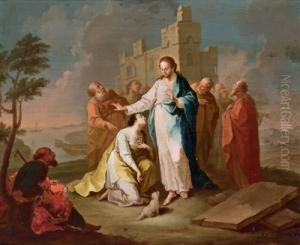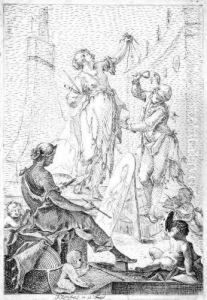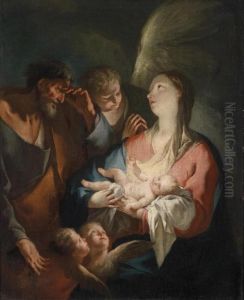Johann Ignatz Zimbal Paintings
Johann Ignatz Zimbal was a notable German sculptor and woodcarver born in 1680, whose work significantly contributed to the Baroque period in art. His career was predominantly based in Southern Germany, where he became renowned for his intricate wood sculptures and altarpieces, which adorned many churches and cathedrals throughout the region. Zimbal's work is characterized by its dynamic forms, expressive figures, and the detailed treatment of drapery and ornamentation, hallmarks of the Baroque style that sought to evoke emotion and bring religious narratives to life in an accessible and dramatic manner.
Zimbal's training and early influences are not extensively documented, but like many artists of his time, he likely apprenticed with a master sculptor, learning the techniques and principles of woodworking and sculpture that would define his career. By the early 18th century, Zimbal had established himself as a master sculptor, receiving commissions from both the church and secular patrons. His ability to blend spiritual themes with the naturalistic detail of the human form made his work particularly appealing to clients during the Counter-Reformation, a period that sought to reaffirm the Catholic Church's dominance through the arts among other means.
Throughout his career, Zimbal's contributions to the Baroque movement extended beyond individual pieces to include significant architectural projects where his sculptures served as integral components of the overall design. His altarpieces, in particular, are celebrated for their complexity and the skill with which he integrated figures into architectural settings, creating cohesive works that engage viewers both spiritually and aesthetically.
Despite his success, much of Johann Ignatz Zimbal's life remains shrouded in mystery, and many of his works were not well-documented, leading to challenges in fully attributing some pieces to him. However, his influence is evident in the works of later sculptors in the region, who continued to draw inspiration from his dynamic compositions and detailed figurative work. Zimbal passed away in 1757, leaving behind a legacy that, while perhaps not as widely recognized as some of his contemporaries, significantly contributed to the development of Baroque sculpture in Southern Germany.


